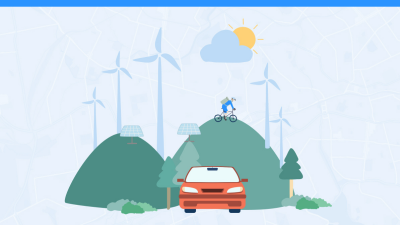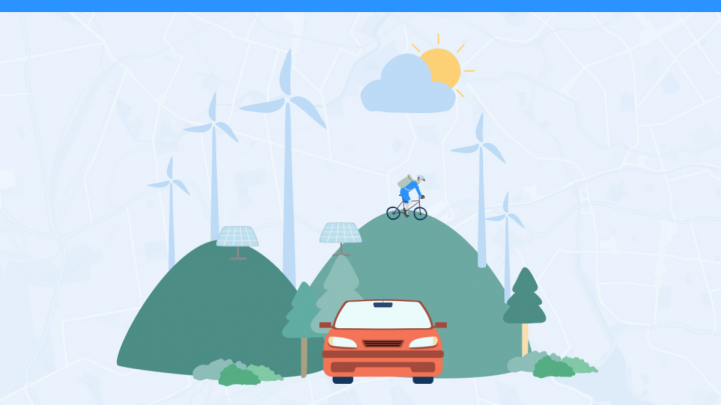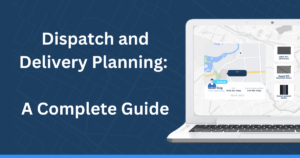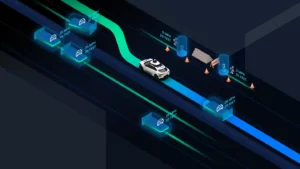An effective way to combat climate change is to learn how to reduce your carbon footprint.
The expansion of e-commerce and online shopping in recent years has elevated last-mile delivery to a key position in the supply chain. A rise in online shopping and home delivery, the usage of conventional delivery techniques, and emissions from delivery vehicles are just a few of the challenges that the final stage of the delivery process faces.
These problems have a major influence on society, the economy, and the environment, hence it is urgent to take action to lessen the last-mile delivery’s carbon footprint. In order to decrease their carbon footprint and boost their bottom line, businesses can adopt sustainable last-mile delivery solutions, such as the use of electric and bicycles, renewable energy sources, route optimization, and recyclable and biodegradable packaging materials.
Present-day difficulties with last-mile delivery
The final leg of the delivery process, known as the “last mile,” involves moving products from a transportation hub to their final location. With the growth of e-commerce and online shopping, last mile delivery has emerged as a crucial link in the supply chain and is thought to be responsible for as much as 50% of the whole delivery expense. However, this procedure has a unique set of difficulties, such as:
Increase in online shopping and home delivery
Home delivery has significantly increased as a result of more people ordering their goods online and requesting doorstep delivery. Due to the necessity of making repeated stops in residential neighborhoods, delivery times are prolonged, fuel consumption rises, and emissions rise.
Use of traditional delivery methods
Diesel-powered vans and trucks are still the most often employed mode of transportation for last-mile deliveries in traditional delivery techniques. However, it is generally understood that these cars contribute significantly to both air pollution and climate change by releasing a lot of greenhouse gasses. The high cost of fuel and maintenance for these cars may also have a big detrimental impact on a company’s bottom line.
Emissions from delivery vehicles
An important source of greenhouse gas emissions, which have a role in both air pollution and climate change, are emissions from delivery vehicles. Delivery times and emissions may increase due to the abundance of delivery trucks in urban areas.
These issues have substantial effects on the environment, the economy, and society, and they necessitate quick action to lower last mile delivery’s carbon impact. Businesses can increase their bottom line and boost customer happiness while also reducing their negative environmental impact by employing sustainable practices.
How to Reduce Your Carbon Footprint
Here’s how to reduce your carbon footprint:
Use of electric and bicycles
An environmentally friendly replacement for conventional delivery vehicles is the use of electric and bicycles. They don’t emit any pollution and require less maintenance than gas-powered alternatives. For example, 500-pound electric cargo bikes are perfect for urban deliveries where parking restrictions and traffic congestion are typical.
Utilization of renewable energy sources
Delivery hubs and electric vehicle charging stations can be powered by solar and wind energy. This reduces the consumption of fossil fuels and the carbon footprint of the delivery process.
Optimization of delivery routes
It’s possible to decrease the number of delivery vehicles on the road, fuel consumption, and emissions by improving delivery routes. The most effective delivery routes can be planned using tools like GPS, route optimization software, and real-time traffic data.
Use of packaging materials that are recyclable and biodegradable
When utilized for last-mile delivery, using biodegradable and recyclable packing materials can have a significant positive impact on the environment. Businesses can use recycled materials and reduced packaging to reduce waste. They can also urge customers to recycle the packaging or provide a take-back program to ensure appropriate item disposal.
Businesses may drastically lower their carbon footprint and increase the overall sustainability of their last mile delivery operations by putting these sustainable practices into effect. By offering quicker and more efficient delivery services, these methods can also reduce costs and raise customer satisfaction.

Benefits of sustainable last mile delivery
Using sustainable methods for last-mile distribution can have a number of advantages, such as:
Reduction in carbon footprint
Sustainable methods can considerably lower the last-mile delivery sector’s carbon footprint, including the use of electric vehicles, renewable energy sources, and route optimization. This improves the air quality in cities while lowering greenhouse gas emissions, which fuel climate change.
Cost savings for companies
Adopting sustainable practices can help cut expenses for organizations. For example, moving to electric vehicles can save fuel and maintenance expenses, and route planning can reduce the number of delivery trucks on the road, hence reducing operational costs. Adopting sustainable practices can also help a business’s reputation and attract eco-conscious customers.
Increased customer satisfaction
By offering quicker and more efficient delivery services, sustainable practices can also increase customer satisfaction. Customers are becoming more concerned about how their purchases may affect the environment, and they are more willing to support companies that use sustainable business methods. Businesses can also give clients real-time updates and tracking information, which will enhance their delivery experience overall.
Businesses can lessen their negative environmental effect, boost their financial performance, and improve customer happiness by implementing sustainable delivery methods in the final mile. Due to these advantages, sustainable last mile delivery is an essential part of any company’s overall sustainability strategy.
Implementing sustainable last-mile delivery: challenges
The following obstacles may arise for businesses when implementing sustainable practices in last-mile delivery:
Infrastructure and technology limitations
Limitations in infrastructure and technology: Adopting sustainable practices, such the usage of electric vehicles and renewable energy sources, may call for considerable infrastructure and technological modifications. For instance, infrastructure for electric vehicle charging may not be present everywhere. Businesses may also need technology, such as real-time tracking systems and route optimization software, which can be expensive to develop.
Regulatory obstacles
Regulatory obstacles can make it difficult to establish sustainable last mile delivery methods. Local laws may forbid the usage of electric vehicles or require a certain kind of delivery vehicle, for instance, restricting the options open to businesses. Regulations governing packaging materials may also have an impact on how long last mile delivery operations can last.
Initial investment costs
Investing in sustainable practices can be expensive up front, which may discourage enterprises from doing so. For instance, firms might not experience a quick return on investment when investing in electric vehicle purchases or infrastructure upgrades.
It will need a team effort from businesses, politicians, and technology suppliers to overcome these obstacles. For enterprises to adopt sustainable practices, policymakers might offer incentives and support in the form of tax credits and grants. Technology suppliers can create creative fixes to get around infrastructure and technological constraints. Businesses can also promote sustainable practices and lessen the total environmental impact of last mile delivery by collaborating with their suppliers and clients.

Choosing a moving company can greatly reduce the stress of moving by offering professional skills in packing, transporting, and unpacking belongings. These services guarantee the safe handling of items, including fragile and valuable possessions, with specialized tools and methods. professional removalists provide customized solutions for both residential and commercial relocations, managing logistics for timely and efficient moves. This enables individuals to save time, minimize physical effort, and feel confident knowing their move is in expert hands.
How to reduce your carbon footprint: Locate2u
Using fleet management software like Locate2u, businesses can manage their fleets efficiently and economically. The route optimization feature of the program minimizes carbon emissions by lowering fuel consumption and the number of vehicles on the road. Both the environment and businesses can save money in the long run thanks to this.
As more businesses come to understand the significance of sustainability, it is imperative to take action to assist reduce carbon emissions. By using fleet management software, businesses may optimize their routes, consume less fuel, and emit less carbon dioxide.
Take action today and make a positive impact on the environment and your business by clicking here.














